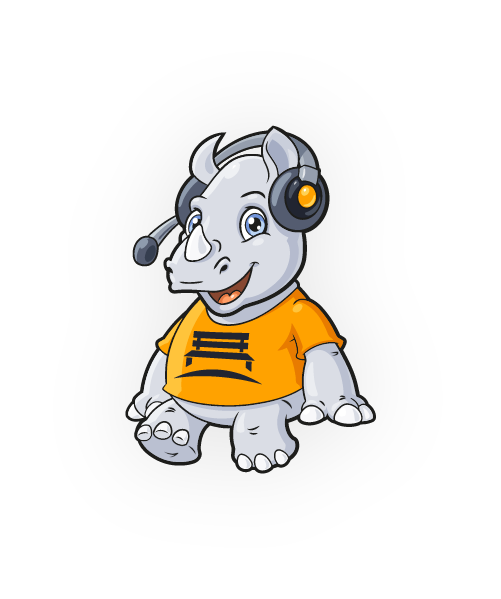There’s only one way to ensure progress, and that is through evaluation of your customer support success. If you aren’t actively and continuously measuring your company, you cannot claim to be successful or even seem successful in today’s business industry.
When it comes to customer support, the same logic applies, but the stakes are even higher because of the importance all organizations place on their customer support structure.
One way to evaluate the success of your company’s customer support is through key performance indicators (KPIs). KPIs can allow you to keep track of your progress regarding the goals you’ve set for yourself, which can be broad or narrow but revolve around your customer ideology.
This blog post will look at what success really means, which factors determine customer support success, and how you can measure it.
What Is Customer Support Success?
To measure customer support success, you need to understand what it is that you are calling success. Simply put, you must have some parameters of success that you want to meet.
When anyone starts a business, they establish a customer service team to resolve customer complaints or queries. However, developing a unique approach to customer service is important for every organization to benefit from having customer service in the first place.
According to Kolsky, 75% of companies reportedly measure customer engagement without defining what it is. Having the CS department as a routine part of running an organization is not enough to thrive or even survive today’s SaaS market. Companies need to have concrete goals behind their customer service measurement.
How You Can Measure Customer Support Success Within Your Organization?
1. First Response Time
When it comes to customer service, we are always fighting against time. Speed is our friend, and in today’s fast-paced market, if you do not have a quick customer support response, you can lose the customer forever. Customers want a fast response on all the platforms, whether a direct call, live chat, or even an email.
A CS team must keep improving their first response time. According to Statista, 12% of Americans rate their number one frustration with customer service as “lack of speed.”
2. First Contact Resolution
First contact resolution (FCR) is the count of customers that have their issues resolved by the customer service on their first ticket. A high FCR means more customers are getting timely solutions to their problems or queries, pointing to the customer support success in providing the customers with great support.
To find your FCR score, divide the number of cases resolved in the first contact by the total number of tickets and multiply the score by 100.
Similarly, you can estimate the tickets that are not getting resolved despite multiple contacts and use the score to investigate what is causing these issues on a broader level. The FCR score can be used to guide training in the CS department.
3. Customer Satisfaction Score
A customer satisfaction score (CSAT) measures the basic level of customer satisfaction. All companies can create flexible and creative approaches to measuring this score according to their product and brand.
However, customer satisfaction with customer services is integral to ensuring that your customer services are on track with the goals and beneficial to the customers.
The CSAT score can be measured by asking a simple question: “How satisfied are you with your customer service experience?” You can create a standard three-point, five-point, or even ten-point scale for a more in-depth review of your services.
Continuously measuring this score can help you track deficiencies in the CS structure and know which strategies are more effective to measure customer support success.
4. Net Promoter Score
In the SaaS market, online reviews and forum discussions significantly impact a company’s sales. Having a good CS team and strategy also ensures that you get positive reviews because of good customer support.
However, word of mouth is still a huge factor in success, and nothing is stronger than personal recommendations of your product or service.
Loyal customers of any organization are open to recommending your product to other people, and this can be used as a customer support success measuring tool by the CS team.
Asking the simple question of “how likely are you to recommend us to your friends or family?” or, more specifically, “how likely are you to recommend our customer service to a friend who might be having issues with our product?” can help determine customer success.
The answer to these questions can categorize all customers into promotors who love the service and would recommend it, neutral customers who have had satisfactory experiences but do not hold strong feelings towards the service or the company, and detractors who are customers that have had a negative experience and would share that negative experience with their friends or family.
A net promoter score (NPS) aims to shift as many customers as possible towards being promotors, and tracking their journey with the company is essential. Asking the promotion question in surveys or during customer interaction is vital to maintaining a good customer base.
5. Retention Rate
Building customer loyalty is one of the organization’s most important CS goals. However, establishing a long-term relationship with clients, one that is based on trust and confidence, is no small task, but the rewards are also unmatched.
The customer retention rate can be calculated by using the following process:
- – Define a time limit for your goal
- – Note the number of customers at the start and end of that period
- – Subtract any new customers that you acquired
- – Divide the remainder by the number of customers at the beginning
- – Multiply this number by 100.
The Bottom Line
Customer support success may seem impossible to measure when you don’t even know what you term “success.” But with some inner reflection, looking at customer retention, churn rates, and brand image, you can realize what it is to you.
Once you do that, KPIs are here to help you take the next few steps. Remember: Customers are the bread and butter of your business, and if you’re constantly losing them and can’t identify why, you won’t have a business.
Fortunately, KPIs like the NPS, CSAT, and FCR can help you find out whether your company has successfully retained customers. If it has, good for you! If it hasn’t, the scores provide you with a way to improve your current customer service processes.
It’s a win-win either way.











